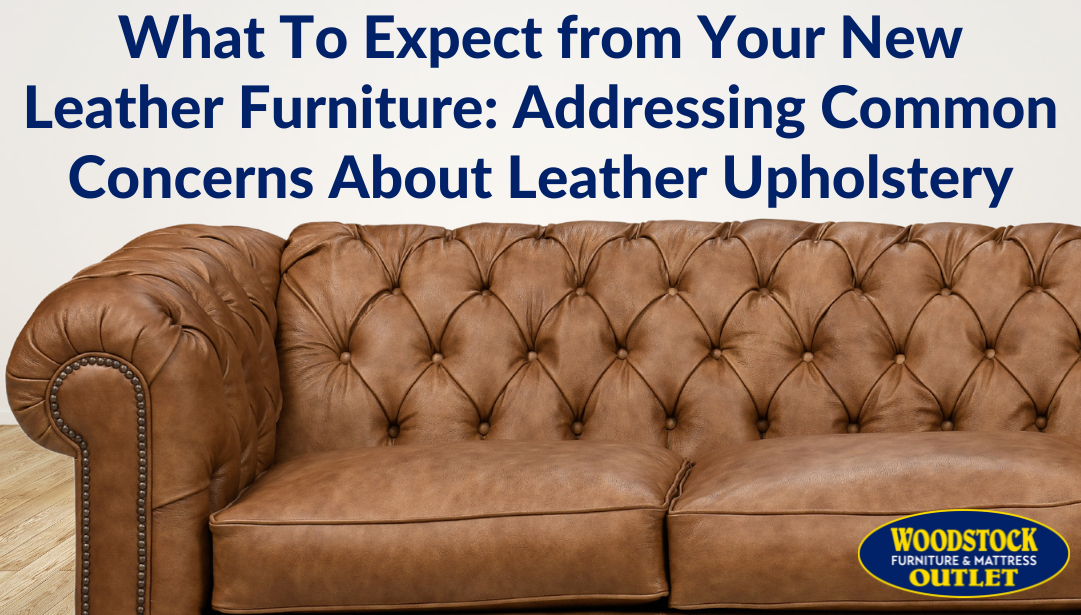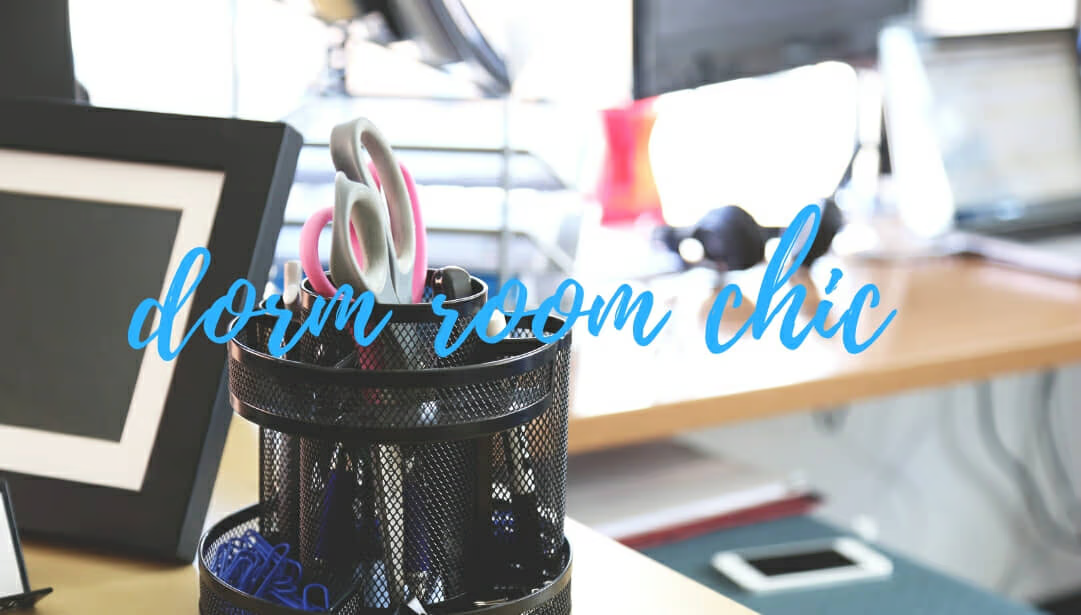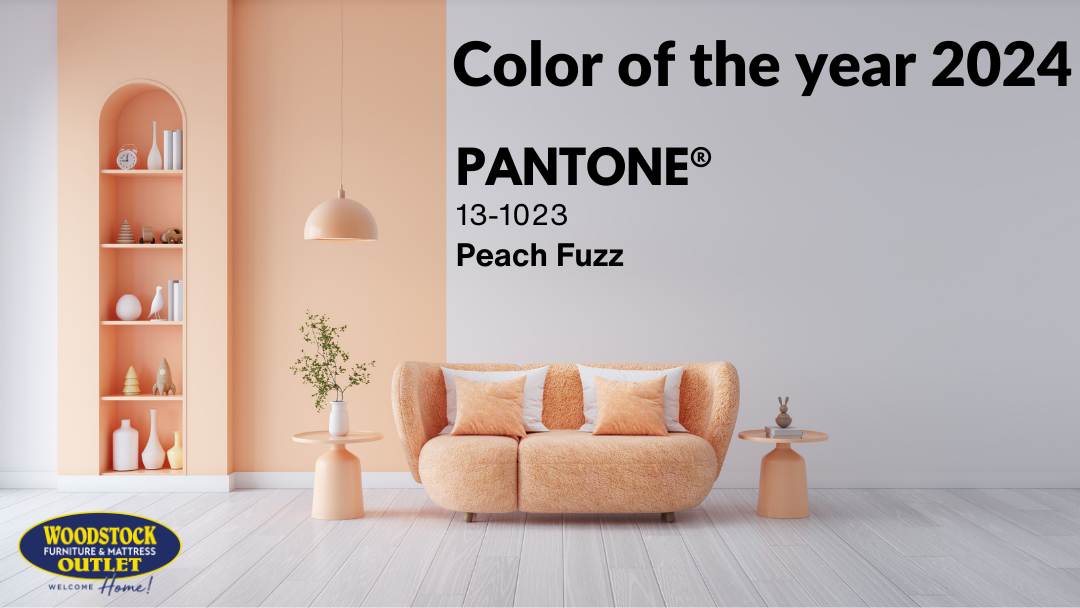Here at Woodstock Furniture & Mattress Outlet, we believe that through consumer education we can ensure our customers (and shoppers everywhere) have a better furniture shopping and ownership experience. Frankly, when it comes to complex topics like leather upholstery there is a lot of info to cover. That’s why we’ve written extensively on subjects like leather care, leather grades, and leather finishes – to help customers like you!
Despite this, we still get occasional questions from customers or other shoppers worried about their leather upholstery. Most often, these questions revolve around discoloration, staining, fading, or concerns about how their leather furniture is wearing. That’s what we’re focusing on today.
Whether you’ve recently purchased a leather sofa or are currently considering some leather upholstered furniture, this article is for you! Join us below as we address the most common customer concerns about leather furniture – as well as some possible solutions. By the end, you’ll have a better idea of what to expect from your new leather seating. Or, if you’re in the market, you’ll discover which features and types of leather are the best fit for you!

Common Issues with Leather (And Why They Happen)
When it comes to consumer problems with leather, sometimes the concern really is a legitimate issue with the leather upholstery. For instance, tears in the leather, popped seams, or loose stitching. However, in our experience, when shoppers have an issue with their leather furniture purchase, the problem almost always has to do with the leather’s surface or appearance. These concerns range from perceived marks or stains, to fading or changes in color, to other inconsistencies in the leather.

Leather upholstery is a premium product. As such, leather furniture can be a significant financial investment. Imagine spending money on a high-end leather sofa only to be dissatisfied with its appearance a few short months later. Frustrating, right?
Here’s the problem. Often times, there’s nothing functionally wrong with the leather itself. These issues are often the result of poor communication from the seller, or just plain bad info floating around online. In other words, the problem isn’t necessarily the product. Rather, the seller didn’t sufficiently explain the product or otherwise misrepresented it to the customer.
Fortunately, we can avoid these potential problems with a little extra knowledge and preventive action. That’s why it is absolutely critical that shoppers learn what goes into owning a quality piece of leather furniture. We don’t want you or anyone else to be dissatisfied with your leather purchase. That’s why we feel it’s our duty to inform customers about leather characteristics and how their leather furniture should wear in order to properly set their expectations.
A Disclaimer on Different Leather Grades & Finishes
We want our furniture shoppers to have all the info they need to make a well-informed decision on a sofa, sectional, chair or loveseat they’ll love for years to come. The first and most important thing to understand is that not all leathers are created equal.
From aniline leathers to pigmented leathers and everything in between, different types of leather have their own features and characteristics. These characteristics are the key to understanding how different leathers wear and age over time, their stain and fade resistance, and more.
The general rule of thumb is that the more expensive or higher the grade of leather, the more natural characteristics of leather it will retain. As a direct result, these high-end leathers also typically have less protection against stains, sunlight, color transfer, or daily wear.

Full grain and high-end top grain leathers include the outermost parts of the hide. Meanwhile with lower quality top grain or split leather, leather craftsmen largely (or completely) remove the natural grain during the splitting and tanning processes. Similarly, more expensive non-corrected leathers finished with transparent aniline dyes or translucent semi-aniline dyes, do little to mask the natural features or protect the leather surface.
By contrast, tanners craft more affordable corrected, pigmented or protected leathers with the goal of evening out any perceived flaws. They do this by buffing and/or embossing the surface and then sealing it with a protective layer. While this process eliminates natural blemishes and makes pigmented leather more resilient to wear, there is a cost. As a result of this process, the leather loses its softer, natural feel and some of its visual appeal.
Understanding The Natural Characteristics of Leather
So what are these natural leather characteristics we keep talking about? Think of it this way – the hides used to make authentic leather chairs and sofas once belonged to cattle. The environments where these cows were raised and lived varies, but this past life lends certain traits to the leather.

These natural characteristics include visible pores, bug bites, surgical or barbed wire scars, manure burns, skin folds, neck creases, stretch marks, brand marks, fat wrinkles, and more. It is important for customers to understand that these imperfections are not flaws. Rather, they are features you will only find in expensive, authentic, top quality leather.
Along with having a softer feel, non-corrected full grain and top grain leathers treated with aniline dyes (and semi-aniline dyes to a lesser degree) leave these imperfections intact because they add authenticity and character. If you prefer a more even, uniform appearance, that’s okay too! But a corrected or pigmented leather would probably be a better fit for you.
How Your Leather Upholstered Furniture Should Wear
The other issue we see far too often in our industry is consumers disappointed with how their leather looks weeks, months or years after purchasing. This is largely due to furniture sellers not properly teaching shoppers what to expect when it comes to how their leather furniture’s appearance will change over time.
These changes and how a leather wears depends greatly on the leather’s finish. For instance, aniline leathers, semi-aniline leathers, and corrected or pigmented leathers will all wear differently. Remember, each of these leathers has increasingly more protection than the one before.
How Does Aniline Leather Wear?

If you recall, the tanner processes aniline leather with extremely mild, transparent dyes. The only goal here is to preserve the leather’s natural look and feel. While some aniline leathers are waxed or oiled to provide some protection, they are still the most vulnerable to wear.
A hallmark of aniline leather is that it will develop its own unique characteristics, or patina, over time. This means that your brand new aniline leather seating may appear slightly different than in the showroom at first. After all, the floor samples in the showroom have been sat on by countless shoppers!
Wear patterns, creases and color variations (whether darker or lighter) are absolutely normal based on how you use your new leather sofa. Where you sit, how you sit, sunlight in your home’s environment, or even oils from your body can impact the look of these leathers. This is a feature, not a flaw, and is to be expected. In fact, the unique patina and natural characteristics are precisely why this leather is both incredibly popular and expensive.
How Does Semi-Aniline Leather Wear?

Semi-Aniline leather is processed with dyes that have only a slight degree of pigmentation. These leathers also may have some minor correction to the grain or slight protective properties. Essentially, these leathers are the happy medium between aniline and pigmented leather finishes.
As such, semi-aniline leathers should wear similarly to aniline leathers, but less noticeably. These leathers will also develop a unique patina and wear pattern, and some variation in color can be expected. Factors like oils, sunlight, etc. can also impact the appearance of semi-aniline leather.
How Does Pigmented or Corrected Leather Wear?

While at the tannery, pigmented leather is buffed and processed to correct the grain, treated with dyes, and finally, coated with a sealant. This top-coat finish provides a significant barrier to stains and wear.
These kinds of corrected leathers are great for those who prefer a leather sofa, sectional or chair that will maintain the same appearance for the entire life of the product. Your sofa won’t develop a unique wear pattern or patina, and there won’t be any break-in period before it will look like it did in the showroom. On delivery day, it should look just like it did in the store allowing for some slight color variation depending on your lighting.
Other Factors & Considerations
Here are two final considerations for you as you continue on your journey to leather furniture ownership. These are important factors for all types of leather, but for reasons discussed above, they are particularly important if you’re considering seating with aniline or semi-aniline leather upholstery.
First, be mindful of anything that comes into contact with your leather upholstery – especially with aniline and semi-aniline leathers. Remember that unlike other materials, natural leather literally has pores. As a porous surface, it has a tendency to absorb things. This includes sunlight, sweat, body oils, common household cleaners, harsh chemicals and solvents, perfumes, hair and skin care products, nail polish and remover, sunscreen or sunblock, or wet clothes from your chlorine or saltwater pool. Even some prescription medications can excrete certain chemical compounds through the skin that can damage unprotected leathers. In short, treat leather like you’d treat your own skin – the less chemicals the better!

Second, remember that accumulation is the enemy. What do we mean by this? Well, believe it or not, all kinds of leather upholstery are relatively low maintenance despite the scary paragraph above. The problems start when owners allow grime to accumulate on the leather surface. Believe it or not, accumulation can even void some warranties! When we say “accumulation” this goes for everything from dirt, to food and drink spills, to chemicals, to body oils. Periodically dusting or vacuuming your leather sofa, along with the occasional damp rag wipe-down of high-contact areas, can go a long way to preventing staining, fading, darkening, or color loss.
[Editor’s Note: Don’t forget to follow these basic leather furniture care and cleaning tips!]
The Solution? Get to Know Your New Leather Seating!
Are you a new leather furniture owner or just looking at a specific piece of leather seating? Either way, in order to know what to expect in terms of wear, coloration, or other characteristics, it’s important to know exactly what kind of leather you’ve got.
As we stated above, not all leather is created equal. For more in-depth information on the different kinds of leather finishes, leather grades, and how to clean these leathers, please check out our helpful resources below:
- Aniline vs Semi-Aniline vs Corrected/Pigmented Leather: What’s the Difference?
- Learn Your Leather Grades: Full Grain Leather vs Top Grain Leather vs Split Leather
- How to Clean a Leather Couch or Sofa: Tips to Clean Any Leather Upholstered Furniture
Finally, if you have an issue with your leather or are unsure of what kind of leather upholstery you have, we’d be happy to help. If you’re still undecided about what kind of leather upholstery is best for you, we’d love for you to give our own leather experts a visit! Please drop us a message on our convenient webchat or visit any of our North Georgia and Atlanta area furniture stores today.







